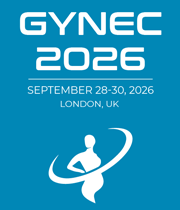Title : Spatial multiomic landscape of the human placenta at molecular resolution
Abstract:
Successful pregnancy is critically dependent on the placenta, a transient yet highly specialized organ governed by intricate, dynamic gene regulatory networks. Disruption of these intercellular and intracellular programs can lead to a range of pregnancy complications and fetal developmental disorders. However, the molecular architecture that orchestrates early placental development remains incompletely understood. In this study, we present a comprehensive, spatially resolved, single-cell multiomic atlas of the human placenta during the first trimester.
We applied a multimodal framework combining paired single-nucleus ATAC-seq and RNA-seq, spatially barcoded ATAC-seq and RNA-seq, and high-resolution in situ sequencing and hybridization-based transcriptome mapping. This integrated approach enabled reconstruction of the joint epigenomic and transcriptomic landscape at single-cell and spatial resolution across diverse placental compartments. Paired chromatin and transcriptome profiling revealed tumor-like gene expression and transcription factor motif programs that may support placental adaptation to the immunologically and metabolically challenging uterine environment. Analysis of gene-linked cis-regulatory elements highlighted substantial regulatory complexity underlying trophoblast differentiation trajectories and potential placental disease susceptibility.
Spatial transcriptomic and epigenomic mapping localized these regulatory programs within key anatomical structures such as the villous core and extravillous trophoblast columns. Moreover, we identified niche-specific transcriptional elements and signaling interactions that shape distinct cellular microenvironments during early development. To further resolve the chromatin landscape, we computationally imputed genome-wide single-cell multiomic profiles, enabling spatial characterization of chromatin accessibility dynamics across cell types.
Together, our work provides the most detailed spatial and molecular reconstruction of the early human placenta to date. This resource serves as a foundational platform for future investigations into the epigenetic regulation of placental development, maternal–fetal communication, and the pathogenesis of pregnancy-related disorders such as recurrent pregnancy loss and intrauterine growth restriction.




